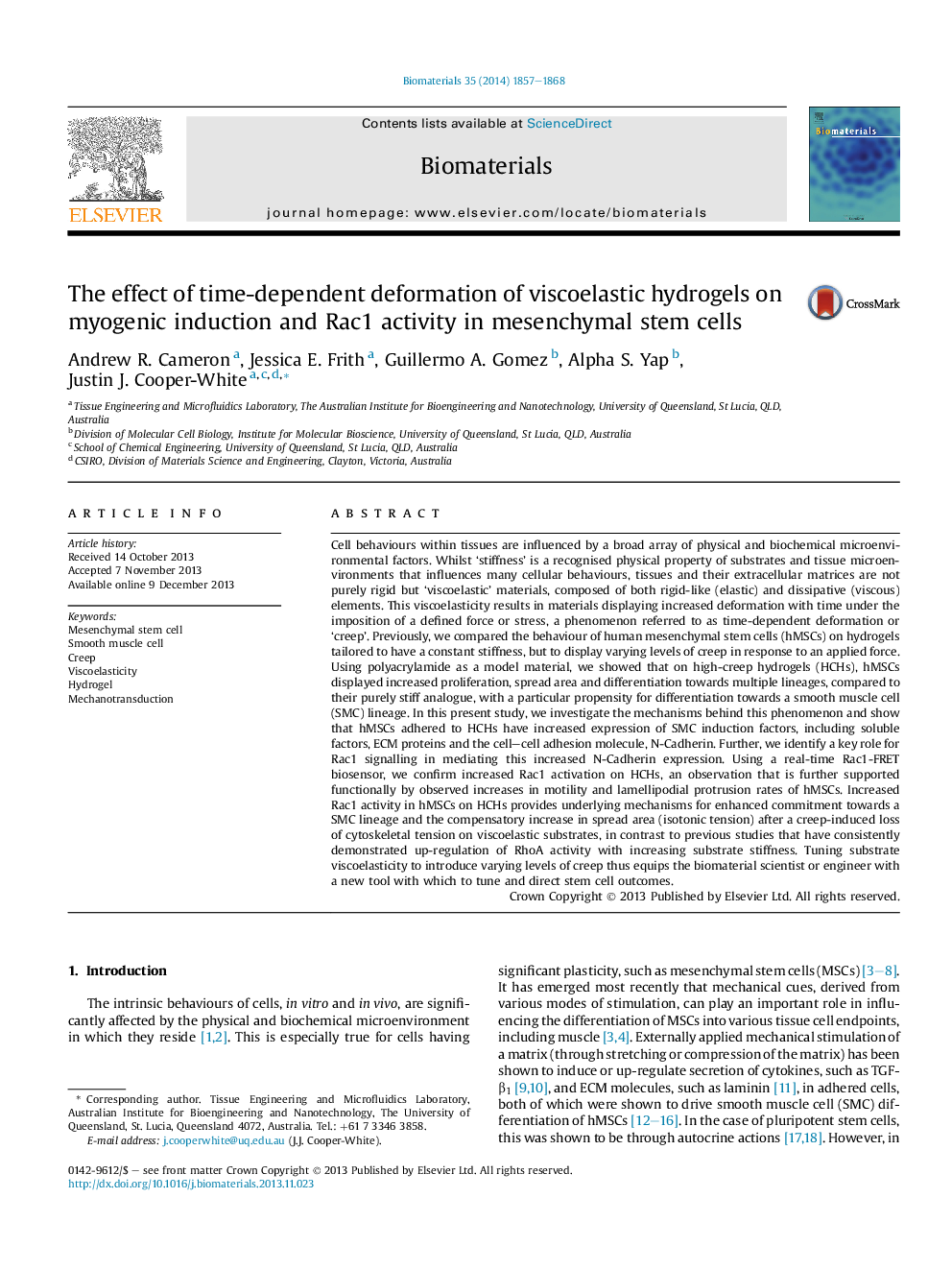| کد مقاله | کد نشریه | سال انتشار | مقاله انگلیسی | نسخه تمام متن |
|---|---|---|---|---|
| 5996 | 453 | 2014 | 12 صفحه PDF | دانلود رایگان |
Cell behaviours within tissues are influenced by a broad array of physical and biochemical microenvironmental factors. Whilst ‘stiffness’ is a recognised physical property of substrates and tissue microenvironments that influences many cellular behaviours, tissues and their extracellular matrices are not purely rigid but ‘viscoelastic’ materials, composed of both rigid-like (elastic) and dissipative (viscous) elements. This viscoelasticity results in materials displaying increased deformation with time under the imposition of a defined force or stress, a phenomenon referred to as time-dependent deformation or ‘creep’. Previously, we compared the behaviour of human mesenchymal stem cells (hMSCs) on hydrogels tailored to have a constant stiffness, but to display varying levels of creep in response to an applied force. Using polyacrylamide as a model material, we showed that on high-creep hydrogels (HCHs), hMSCs displayed increased proliferation, spread area and differentiation towards multiple lineages, compared to their purely stiff analogue, with a particular propensity for differentiation towards a smooth muscle cell (SMC) lineage. In this present study, we investigate the mechanisms behind this phenomenon and show that hMSCs adhered to HCHs have increased expression of SMC induction factors, including soluble factors, ECM proteins and the cell–cell adhesion molecule, N-Cadherin. Further, we identify a key role for Rac1 signalling in mediating this increased N-Cadherin expression. Using a real-time Rac1-FRET biosensor, we confirm increased Rac1 activation on HCHs, an observation that is further supported functionally by observed increases in motility and lamellipodial protrusion rates of hMSCs. Increased Rac1 activity in hMSCs on HCHs provides underlying mechanisms for enhanced commitment towards a SMC lineage and the compensatory increase in spread area (isotonic tension) after a creep-induced loss of cytoskeletal tension on viscoelastic substrates, in contrast to previous studies that have consistently demonstrated up-regulation of RhoA activity with increasing substrate stiffness. Tuning substrate viscoelasticity to introduce varying levels of creep thus equips the biomaterial scientist or engineer with a new tool with which to tune and direct stem cell outcomes.
Journal: Biomaterials - Volume 35, Issue 6, February 2014, Pages 1857–1868
